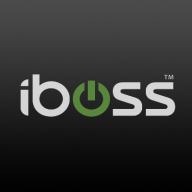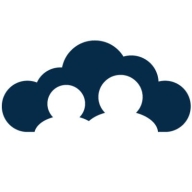


CrowdStrike Falcon and JumpCloud compete in the cybersecurity and IT management category. CrowdStrike Falcon seems to have the upper hand with its advanced security features and enterprise appeal based on the data comparisons.
Features: CrowdStrike Falcon is recognized for its endpoint detection and response (EDR), threat analysis through AI/ML, and real-time protection with minimal system performance impact. JumpCloud provides robust integration capabilities, directory services, Single Sign-On (SSO), and extensive cloud app integrations for efficient identity and device management.
Room for Improvement: CrowdStrike Falcon users would like to see enhanced integration capabilities, better report functionalities, and dashboard usability improvements, along with more comprehensive device control features. JumpCloud could improve mobile device support, refine user management queries, and provide more pre-configured cloud app integrations.
Ease of Deployment and Customer Service: CrowdStrike Falcon can be deployed in private, public, hybrid cloud, and on-premises environments, displaying versatility. However, its technical support receives mixed feedback, with some users noting response delays. JumpCloud is mainly utilized in public cloud setups, with customer service generally well-regarded and aided by its cloud-centric deployment simplicity.
Pricing and ROI: CrowdStrike Falcon, although more expensive, justifies its cost with advanced security features, appealing to larger enterprises. The ROI is evident through decreased downtime and increased productivity. JumpCloud offers a cost-effective solution with variable pricing plans, ideal for startups and small businesses, presenting a compelling value proposition with its simplicity and comprehensive integration options.



| Company Size | Count |
|---|---|
| Small Business | 6 |
| Midsize Enterprise | 6 |
| Large Enterprise | 5 |
| Company Size | Count |
|---|---|
| Small Business | 46 |
| Midsize Enterprise | 34 |
| Large Enterprise | 61 |
| Company Size | Count |
|---|---|
| Small Business | 13 |
| Midsize Enterprise | 2 |
| Large Enterprise | 3 |
Iboss offers a comprehensive cloud-based security platform valued for its scalability and autonomous features, ensuring robust security with easy deployment and management capabilities.
Renowned for its robust security architecture, Iboss integrates seamlessly within diverse networks, delivering efficient granular filtering and advanced content categorization. Its single pane of glass console provides ease of management, allowing rapid scalability suitable for rapidly deploying environments. Operates in BYOD setups due to inline filtering without device installation. Integration with cloud-based applications enhances user control, and features like SASE, SSL inspection, and ChatGPT risk protection stand as highlights. Despite its strengths, users have pointed out areas for enhancement like direct navigation in reports, SSL decryption, and better cloud integration while having room to improve data loss prevention.
What are the most important features of Iboss?The usage of Iboss spans educational institutions, specifically K-12, to enforce internet policies, protect data, and support remote work environments. It provides web filtering and security frameworks to ensure safe browsing. Its platform-as-a-service model offers flexibility for both cloud-based and on-premises requirements, integrating seamlessly to deliver enhanced security features suitable for various deployment needs including zero trust, CASB, and network security for work-from-home setups.
CrowdStrike Falcon offers comprehensive endpoint protection with real-time threat detection, AI-driven capabilities, and seamless integration with other platforms. Its cloud-native design provides robust security across diverse environments, making it a reliable choice for modern cybersecurity needs.
CrowdStrike Falcon is heralded for features like robust endpoint visibility, threat detection, and AI-driven capabilities. Users value its efficient real-time monitoring, which maintains low impact on performance while offering seamless integration with platforms. The lightweight design, coupled with comprehensive dashboards and automated threat responses, enhances security operations while reducing resource strain. CrowdStrike's cloud-native architecture ensures flexible, always-on protection, making it adaptable to a wide range of environments. However, improvements can be made in log management, compatibility with diverse operating systems, and integration with third-party technologies. Users also seek more robust reporting features, fewer false positives, and better support for legacy systems. Enhanced policy application, AI capabilities, and extended on-demand scanning are desired, while pricing and technical support responsiveness are concerns.
What are CrowdStrike Falcon's key features?CrowdStrike Falcon is implemented widely in industries relying on robust endpoint protection for monitoring, securing endpoints, forensic analysis, and malware detection. Its cloud-based AI capabilities ensure comprehensive security across devices, making it a preferred choice for networks, servers, and workstations globally. The efficient management of security threats and compliance with regulations is achieved with minimal resource consumption.
JumpCloud offers efficient device management, single sign-on, and integration capabilities. It integrates seamlessly with Microsoft 365 and Google Workspace, streamlining user management across diverse environments.
JumpCloud delivers device, user, and application management across platforms like Windows, Mac, Linux, and cloud services such as AWS and Azure. Acting as a cloud-based directory, it facilitates single sign-on and identity access management, making it an attractive replacement for Active Directory and LDAP directories. Its policy management and centralized directory simplify user and device administration, offering a user-friendly interface with flexible access control and remote management. Organizations can experience streamlined onboarding and offboarding processes, robust authentication, and scalability. Despite being powerful, room for improvement is noted in alert capabilities, comprehensive MDM for Windows, multi-tenant features, and API reliability.
What are the key features of JumpCloud?Companies across industries utilize JumpCloud for comprehensive management of devices and user identities. It is especially beneficial in technology-driven sectors where centralized directory services replace traditional Active Directory and LDAP models. Organizations employing platforms like AWS and Azure find it essential for maintaining efficient and secure access management.
We monitor all ZTNA as a Service reviews to prevent fraudulent reviews and keep review quality high. We do not post reviews by company employees or direct competitors. We validate each review for authenticity via cross-reference with LinkedIn, and personal follow-up with the reviewer when necessary.